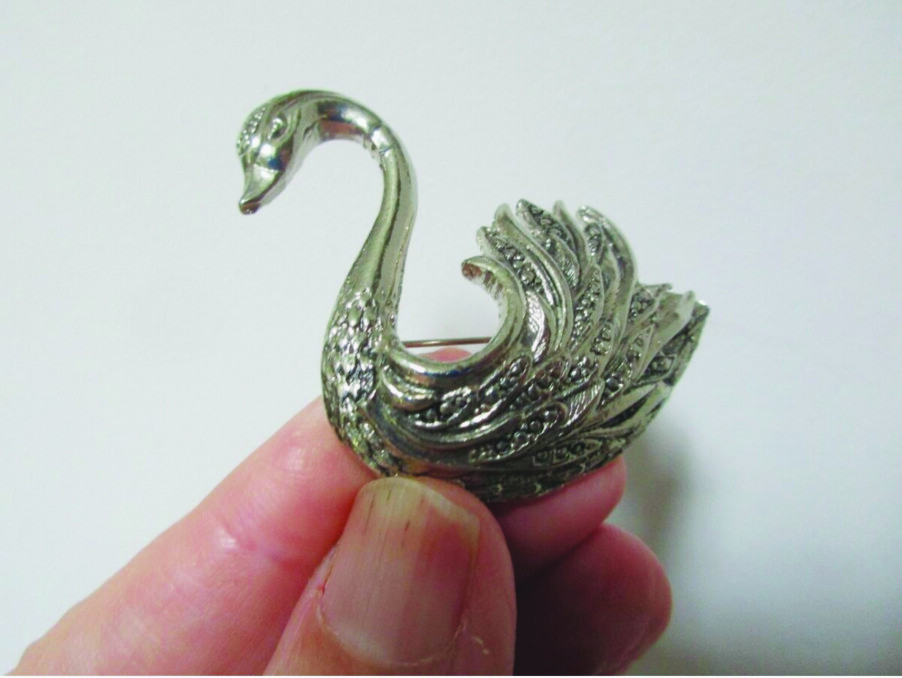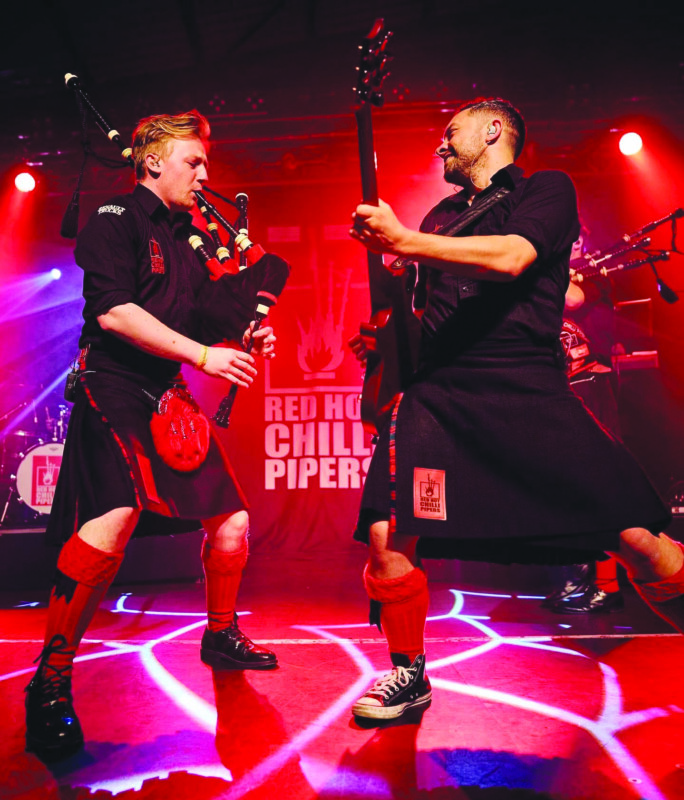Events and spots for a night out with longtime sweethearts, first dates and friends!
By John Fladd
jfladd@hippopress.com
Lenny Demers is frustrated at how a lot of people see martial arts.
“I hear a lot of, ‘This is going to take me a couple of months,’” he said. “They’ll say, ‘I’m going to be a black belt in a couple of months. And I’m going to be able to fight 20 guys with knives and guns coming at me.’ And I try to tell them, ‘That’s not self-defense. That’s a movie. That’s not practical. Self-defense is when you’re minding your business, someone sneaks up and grabs you by your neck, and you react really quickly, and you get out of it.’”
Demers, the owner/operator of Kenpo Academy of Self Defense in Londonderry, is a master of Shaolin kenpo karate but also teaches classes in taekwondo, kickboxing, Brazilian jiu jitsu and several martial arts weapons. Many of Kenpo Academy’s classes are geared toward children, but some of Demers’ most rewarding experiences over the years have been with adult students.
“I have a lot of adult students that I’m very proud of,” he said. “I have one kid that started with me when he was 5 years old — him and his twin sister. They became like part of my family. They’ve been with me for 25 years. He just got his sixth degree [black belt in karate]. His sister is a fourth degree. ”
Adults, he said — most adults, anyway — have an easier time wrapping their heads around the emotional aspects of karate.
“Everyone thinks karate’s all just about the anger,” he said, “punching and hitting. I say karate’s mostly about your mind, calming your mind down, keeping cool, keeping calm instead of freaking out. We talk about that a lot. Adults will take a step back a little bit, once in a while, I think, but kids don’t.”
Andrew Jefferson, owner (and instructor) of Bulsajo Kaekwondo in Goffstown, agrees that the martial arts are as much about emotional development as they are about shouting, kicking and throwing. He teaches taekwondo to students from 4 years old to 70.
“There’s a lot of character development,” Jefferson said. “You see it a lot in kids because we are giving kids extra structure and teaching them discipline and about being respectful, but you do see it just as much in teens and adults. For them it’s [rooted in] how they work really hard and overcome an obstacle and that helps them improve their self-confidence and their determination.”
“Character-building has always been part of martial arts because being a warrior or a soldier, you have to have a certain level of confidence and belief in yourself. And I think that that just carries over from old and ancient times, if you will, to modern times. And so martial arts are a great way to help people build character.”
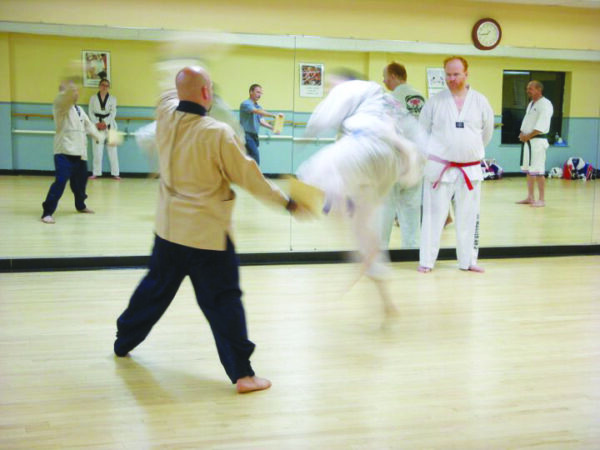
Jefferson said adults come to taekwondo for many reasons, some philosophical and character-driven, but most come for practical reasons.
“Depending on the time of the year,” he said, “their reasoning for coming in is, ‘Well, it’s something I’ve always wanted to do and now I’m getting around to doing it.’ Or sometimes, like around the new year, they’ll … want to lose some weight, or gain flexibility, or get in shape, and martial arts seems like a fun way to do it.”
“Kids are also very fun to teach,” Jefferson said, “but there’s something about adults overcoming obstacles or gaining abilities that they never thought they would that feels even better.”
Linda Murphy, the owner of Bare Knuckle Murphy’s Boxing Gymnasium and Go Ninja Circus Arts in Manchester, is something of an outlier among martial artists; she teaches mostly adults. “This studio is primarily focused on competitive fighting arts, like kickboxing and boxing — USAB-style boxing,” she said. “We have a lot of people in their 20s and 30s, but we do have older people. We have right now a man who’s in his 50s and he wants to compete in boxing. There is a Master’s Division [for older competitors] and he’s doing really well. There is a kind of a team sort of atmosphere here. It’s not like the traditional bowing, black belt; it’s more military style.”
Murphy has been involved in a variety of styles of martial arts for many years.
“I started in a Japanese style and went into a Korean style,” she said. “I got black belts in those. And then shodokan and then taekwondo. But I’ve studied a lot of different things. I taught self-defense at Dartmouth College and took wing chun, like a kung fu style, up there. I’ve studied some sabbat, some tai chi, like just different things.”
Over the years, Murphy said, the approach to martial arts in her gym has changed.
“This place started out in 1978,” she said. “It was like a lot of very traditional martial arts out in that time period; people wouldn’t hit each other.” Gradually Murphy shifted to a more full-contact approach, centered on actually winning fights, in the ring or on the street. Now her gym attracts students from many walks of life.
“We get a lot of people who have a background in sports,” she said. “They take an interest in boxing or kickboxing before and want to come in and try it. I usually know they’re going to love it because they already have an understanding of what it is like to train for a sport activity. Boxing has a lot of detail on balance, footwork, head movement, positioning of how your body needs to be, and then all the strategy and the conditioning that go with it. We also get people who have done nothing. One of our coaches, who’s so much fun, he did art and ate potato chips all through high school and then finally dared to come into boxing. He was about 26 and now he’s one of the top [boxers] in New England in the 165-pound class.”
In addition to full-contact martial arts, Murphy teaches gymnastics-based circus skills tumbling, trapeze and silks. While the students in the ring tend to be men, her circus students are generally women, she said. “That tends to be more women,” she said, “but guys are always asking if they can do it. So I’ll include them if they want. Usually the easiest sell is the guys that want to compete because they want to do whatever it takes to get better at their activity. Plus they might be a little more confident to cross over that line.”
“People find that interesting. I find it interesting.”
Jason Bryant is the owner and head instructor at Leverage Brazilian Jiu Jitsu in Concord. He said that while Brazilian jiu jitsu (or BJJ) is one of the fastest-growing sports in the country it is also a very effective form of self-defense. [BJJ is] a martial art or a sport that’s grappling-based,” he explained, “so it’s very similar to wrestling. However, instead of pins we use submissions to win a match, if we’re talking competition. It’s a very hands-on physical sport that uses a lot of leverage, which is why I named my gym that. [Jiu jitsu] uses leverage techniques to overcome someone who might be able to beat you with, let’s say, strength. Classically, it would allow a smaller person to beat a larger, stronger person in a self-defense situation. So it’s a very effective self-defense.“
Bryant said one of the reasons he loves BJJ is that it is built around community values.
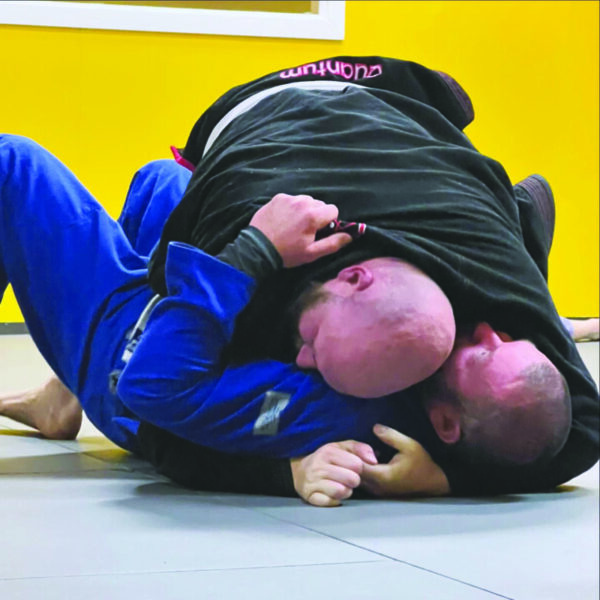
“I have people who come in that will never compete but they get in great shape through training here,” he said. “BJJ is great for law enforcement and first responders, which is something I’m passionate about. With law enforcement, they have to get hands-on a lot. And first responders too, which I hadn’t thought of until I opened the gym. [They might have to deal with] someone who may have overdosed or did something on some substance and they have to get hands-on with them and you’re an EMT, so you may have to know how to kind of handle a person. So it gives you the tools to handle another person physically while doing it with compassion so you don’t have to hurt someone. We don’t have strikes, so it’s not like we’re kicking and punching each other. So it’s very effective when it comes to being hands-on and controlling another person’s body and keeping both people safe.”
There is not really any one type of person who studies BJJ, Bryant said. “It’s a broad mix of people. We have a handful of police officers. We have firefighters that train here, nurses that train here; it’s a very family-oriented group in here. We have a lot of kids whose parents train here. My wife trains here. Both of my kids train here. They want an activity that can help them feel safer, gain some confidence, get in better shape, and have a lot of fun, and building this community of people.”
The prices martial arts studios charge their students varies widely, depending on the style of martial art they teach, and the intensity with which students want to train. Most will offer one or two free classes for new students to get a feel for the experience.
“We offer a two-class pass,” Lenny Demers said, “so students can come in and it costs nothing. I show them what we teach. I don’t expect them to remember everything that I’m teaching them, but I teach them about basic self-defense, defense against somebody grabbing you, defense against somebody pushing you, defense against somebody punching you. They’re not going to master it in the two classes, but in those two classes they’ll get an idea of how I teach and what I teach. I don’t change. If you don’t like me Day 1, you’re not going to like me Day 2. If you love the class Day 1, you’ll love the class Day 2, because it doesn’t change. All they need to do is wear some baggy clothes and come in with an ‘I can” attitude and have fun.”
Depending on what they want to learn and who they want to study from, many martial arts studio owners say adults should expect to pay about $150 per month for wice-weekly classes.
Andrew Jefferson agrees.
“I would say you’re going to be paying over $100 a month for at least two or three days a week,” he said. “Some schools will cost more if their overhead is greater or they have more instructors they have to pay. I would like to help be on the end of the spectrum where I’m a little cheaper for people who need that and don’t have the funds for a bigger full-time school. I’m filling a niche.”
“It’s pretty basic, a monthly, kind of monthly plan, like most fitness gyms would be,” Jason Bryant said. “I offer different tiers based on training frequency, unlimited plans so someone could come in here every single day with a class as much as they want. We mostly charge month-to-month. Some people will have a seat during a sports season and then maybe they’ll pause the membership for a couple months so they can go play or watch a sport. I don’t want finances to be a speed bump for why someone couldn’t come train in jiu jitsu.”
Ultimately, the instructors of martial arts studios say they teach for the love of their particular style and to have a chance to do it full-time. Andrew Jefferson put it like this: “This is pretty great. It’s amazing because it’s such a positive environment and we’re helping people make positive changes. Even on your most trying days you still go home with a smile because you’re doing good work. It’s a rewarding job that I really, really like and honestly I can’t imagine doing anything but teach martial arts.”
Returning to the practice
Roland Cere and Bill Big study taekwondo at Bulsajo Taekwondo in Goffstown.
They are both in their mid-60s and have come back from fairly stark physical challenges in recent years.
“I have a lot of injuries,” Big said. “I’ve got seven fused vertebrae in my neck and two more fused down below. And because of my injuries and some other things, my flexibility has been diminishing to the point where I feel like my body has been atrophied. I felt like, well, I remember I used to do tai chi as well and that helped, helped that a lot. So I decided to go back and just go easy and see if that would help with my flexibility and my pain and so on and so forth. And I have found that it has helped with those things.”
Big said that making real progress in taekwondo has meant a combination of gaining flexibility and learning to work around his physical limitations.
“I’ve been able to pick up some of those flexibility and skills and then I know that I cannot do certain other things because of all the metal in me and I find that I have to dismiss one technique, but I can focus in on a different one instead.”
Cere faced similar challenges.
“I have a steel rod with screws in my back,” he said, grimacing, “also, fusion and four back surgeries. I was told I could never walk again. This was eight years ago, and here I am walking.”
Both men studied martial arts in their youth and came back to it in the past few years. Both of them worked their way, belt by belt, to earn second degree black belts in taekwondo last fall. This came at the cost of constant, relentless practice, which has been a source of pride to both men.
“Martial arts have helped me get my self-confidence back,” Big said. “Because I was told if I moved the wrong way or fell down or this or that, I could easily be paralyzed for life, but I loved [martial arts] 20 years ago, so I said, ‘You know what? I’m just going to do it, and test it out.’ I was really scared to do anything, but slowly but surely, It has been wonderfully helpful.” He said his improvements have been as much psychological as physical. “This really gave me something to focus on and think about and it’s really helped my attitude. It’s improved my outlook in life and given me that confidence to be able to get back in there and do things.”
“And to surround yourself with wonderful people,” Cere added. “I mean, there isn’t a jerk in this whole place. Everybody is very helpful and courteous. For me, taekwondo has been a fountain of youth.”
Big added that in his experience martial arts has been a team effort. “You’ve got to get up,” he said. “You have to do the kicks, you have to do the punches, but it’s also a bit of a team player thing. Learning from others, working with them, getting feedback — I think that that really makes a great difference.” —John Fladd
What are some of the styles of martial arts that are taught in our area?
American Kenpo Karate
“Our system is based on the principles of situational awareness, stability, balance, coordination, power, flow, and timing, all teaching the maximum application of motion through following natural geometry in a ‘Universal Pattern’ and mathematics. Adults that are looking for a system that can be adapted to fit individual ability and energy levels would find our art to their liking.” —Jason Cote, Studio Operations Director, Concord Karate Studio and Academy, 89 Fort Eddy Road, 224-5425, cks-nh.com
Brazilian Jiu Jitsu
“Brazilian Jiu Jitsu (BJJ) is a grappling sport where the mat serves as your ally, and having trustworthy training partners is essential for a safe and effective training environment. BJJ draws a wide range of individuals, such as fitness aficionados, martial arts enthusiasts, those interested in self-defense, trauma survivors, veterans, and people who appreciate the social environment of training and the camaraderie found in a dojo. Ultimately, BJJ is an inclusive sport that welcomes people of all ages, backgrounds and fitness levels.” —Tony McBee, owner and Head Instructor, New England BJJ Academy, 30 Henniker St., Concord, 369-4764, nebjj.com
Enshu Do
“Enshudo is a straightforward traditional self-defense art. There are few forms, and memorization is not a priority, but the techniques have been tested over the last half century. The class is perfectly suited for a busy person who is interested in learning self-defense but doesn’t have the time for an extensive curriculum. The atmosphere is relaxed, and training is as gentle or as intense as you and your classmates want it to be.” —Chris Marsh, owner, Independent Martial Arts School, 138 Lake St., Nashua, 882-6917, imasnh.com
Jiu Jitsu (as opposed to Brazilian Jiu Jitsu)
“Jiu jitsu as applied for self-defense is going to be more conducive regardless of your weight or your size. You’re using leverage, advantage positions against a stronger, more powerful opponent. You don’t have to be physically gifted or athletic or in any type of condition or shape to apply the skills that are highly effective for self-defense. If you’re willing to learn and put in a little bit of effort , then it becomes effective. Nothing is an overnight success.” —Christopher Koneles, owner/instructor of Martial Arts Zone, Manchester, 31 Auburn St., Manchester, 206-5716, themartialartszone.com
Judo
“[Competition] judo is the ability to off-balance your opponent and throw them to the ground with sufficient force to score a full point, and if that’s not possible, throw them to the ground and score half point and finish with a submission. Typically the people that do well [in judo] are folks who are physical and have kept themselves in relatively good shape through the years. It is not something I would recommend for somebody looking to get in shape.” —Lee Rossi, owner and Chief Instructor, Checkmate Martial Arts, 200 Elm St., Manchester, 666-5836, checkmateselfdefense.com
Krav Maga
“Krav Maga, it’s not a martial art. It’s sometimes categorized into that, but it’s more of a combat science or system of self-defense. It was formulated by a gentleman named Yimi Lichtenfeld in Israel for the Israeli military. We don’t do things like sparring or gameplay. We don’t have a gamification of violence because we don’t engage in any activity that does not lead to the immediate resolution of a situation, whether that be to have physical violence or to de-escalate or to run away. The people who come [to us] are people who are looking to defend themselves, people who are looking to not get into fights, people who want to feel a little bit more safe walking around.” —Joe Estee, IMI Krav Maga, 150 Nashua Road, Londonderry, 617-774-7188, dotokushin.com
Muay Thai
Muay Thai is an art, a martial art from Thailand, and it’s known as the art of eight limbs, so your punches, your elbows, your knees and your kicks. It originated as their military weapons and how they would defend their borders and such. And then it has eventually evolved into a sport, and it’s the national sport of Thailand. It’s an art that can be modified if you have injuries or limitations, but it’s great for physical fitness, stress relief, coordination, confidence and empowerment. It’s just a sport that everybody can do. —Laura Barchard, instructor, Professional Martial Arts Academy, 15 E. Broadway, Derry, 301-4252, pmaderry.com
Shaolin Kenpo Karate
To me, Shaolin kenpo is the most practical form of self-defense. It’s very practical, it’s very fast. You defend yourself and you get out of there. It’s not very flashy, it’s not very flowery. It’s basic self-defense. Somebody’s trying to hurt you, you defend yourself and you get out of there. Everybody works with their own ability; we have a wide variety of age range and levels. I have a lot of students that come in from other styles that they’ve stopped — ‘I made it to brown belt 10 years ago; I would love to get my black belt’ — and we help them. —Lenny Demers, owner, Kenpo Academy of Self Defense, Crossroads Mall, 123 Nashua Road, Londonderry, 437-9900, kenpo-academy.com
Shotokan Karate
Shotokan is a very traditional style of Japanese martial arts. The focus is on strong stances. We do katas, which are forms or memorized steps that have self-defense within them. Our focus is on spiritual growth as far as trying to perfect techniques, trying to build a strong body [and] a strong mind. Some of our adults started in a different style and chose shotokan because, even though it’s a strong style, we’re not full-contact, trying to beat each other up all day, so you can do it as you get older as well. —Sarah Beth Gosselin, Chief Instructor, Phoenix Fire Martial Arts, 79 Plaistow Road, Plaistow, 234-8665, phnixfire.com
Taekwondo
Taekwondo is a mixture of karate and Korean martial arts like taekyeon, modernized. It emphasizes simple techniques and is easy to learn. It is very popular in the Olympics and for its dramatic kicking techniques. Taekwondo would suit any adult, especially one who is wanting to not just improve like maybe not just learn self-defense but also be able to learn how to make improvements to their well-being or to their like self-improvement. —Andrew Jefferson, Bulsajo Kaekwondo, 703-1914, bulsajotkd.com
Tai Chi Chuan
“Tai chi chuan is a low-impact training method that helps to develop one’s internal energy and external strength. Based on self-defense movements, the tai chi chuan forms are practiced as a series of movements connected in a flowing pattern and performed slowly to gain precision and deep body awareness. Adult students of any age who want a holistic approach to wellness should consider tai chi chuan as a means to remain active, promote balance control and improve their health.” —Laoshi Michael Coulon (Yang YaHua), NH Yang Chengfu Tai Chi Chuan Center, 107 Alsace St., Manchester, 623-2371, nhyangtaichi.com
Martial arts for self-defense
Many martial arts studios teach classes in self-defense geared toward women.
Maddie Pratte is in charge of the Women Empowered Program (WEP) at Manchester Karate Studio (371 S. Willow St., Manchester, 625-5835, manchesterkarate.com). She said her program is designed to provide practical solutions to common dangers many women face.
“Our classes are for women only,” Pratte said. “The program addresses 20 physical threat scenarios and 20 possible solutions to them. Because typically in most physical conflicts men are generally physically bigger and stronger, we provide women with strategies that don’t depend on physical strength.”
As with other areas of martial arts, Pratte said much of the WEP training is psychological.
“Self-defense for women isn’t just about punching and kicking,” she said. “It has just as much to do with risk assessment and setting boundaries.” Because many women are socialized to please other people, she said, it can be hard for them to be assertive in the face of aggression.
Linda Murphy, the owner and operator of Bare Knuckle Murphy’s Boxing Gym (163 Lake Ave, Manchester, 623-6066, bareknucklemurphy.com) agrees.
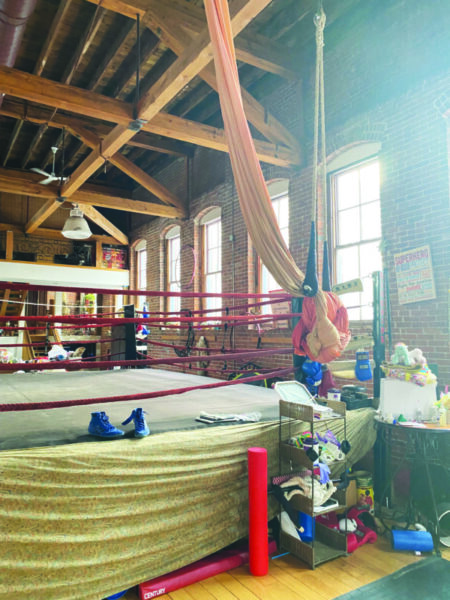
“When I teach women self-defense,” Murphy said, “I like to do a variety of things. We talk a lot about boundary-setting, knowing about how to set boundaries, and verbal assertiveness, which is the midpoint between being aggressive and being passive. I like to give set words and have people practice them.”
“I think culturally we might be either too aggressive or maybe passive altogether,” Murphy said. “I coach a lot of guys, so I see it in both, but women have some different issues — self-defense when it comes to, like, dating violence or sexual assault. Women have to set a boundary in that regard, which can be hard if you want to be liked or, you know, it’s just like a difficult thing to navigate. So I think having words to help with that. And then also I like to do educating on the type of people that might be more likely to not listen to a boundary when you set it and realize that those people [are people you] can be more aware of, or keep a distance from, or maybe realize that’s not a person to date.” —John Fladd
Find a studio
Many martial arts studios offer classes or workshops in self-defense for women, but they don’t always display information about them clearly on their websites or social media.
If you have children who study at a particular school or you are looking for classes near where you live, call any studio and ask if they have any programs specifically for women.
If you find yourself in a dangerous relationship, the NH Coalition Against Domestic and Sexual Violence has a 24/7 statewide helpline to get in touch with a caring and trained advocate at 866-644-3574.
Featured Image: Lenny Demers of Kenpo Academy of Self Defense in Londonderry (courtesy photo).


